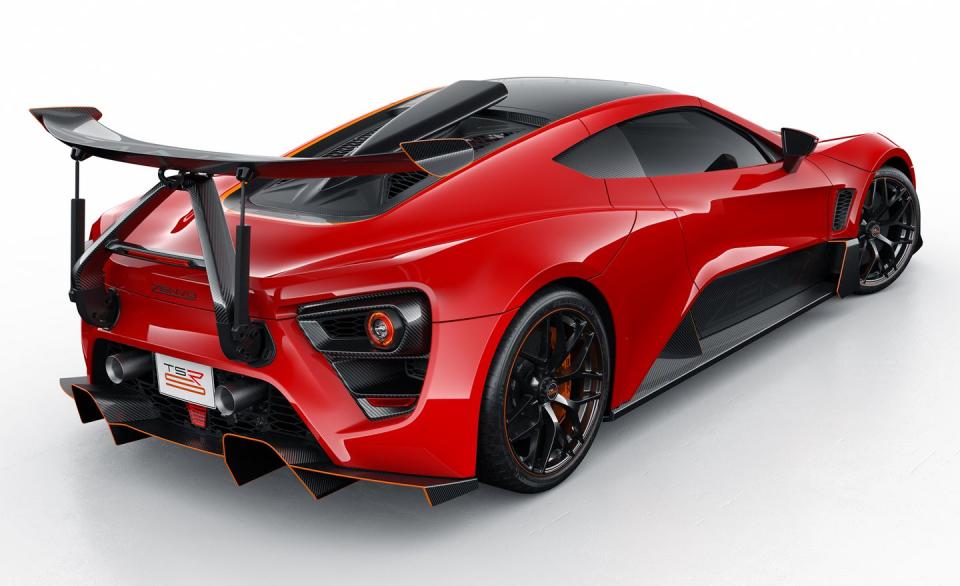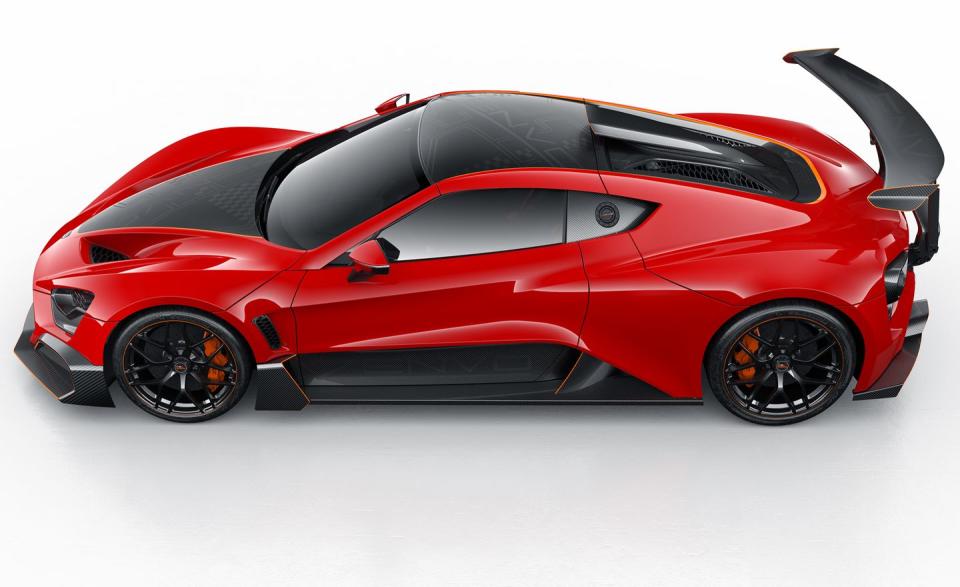What the Heck Is a Zenvo?

What the heck is a Zenvo? To learn more about the Danish hypercar maker few have ever even heard of, we recently caught up with the founder, Troels Vollertsen, who christened the company by combining the last and first syllables of his last name way back in 2007. It rolled out its first car in late 2008, at which point you couldn’t have found three people in our office who’d have bet that Zenvo would still exist more than a decade later. The company has completed just over a dozen cars in all this time, yet it had a stand at the 2018 Geneva auto show to display its latest vehicular evolution, the Zenvo TSR-S. In 2011, we reported the company’s plans to sell in the United States via Red Sea Distribution, which still offers the 1250-hp mid-engined monster here. We still don’t know of any examples on U.S. roads.
C/D: You are the Danish car industry?
Troels Vollertsen: More or less, yeah.
C/D: When did you start this business?
TV: I would say that I have been in it all my life. I had a small company when I was studying mechanical engineering, doing race cars for people and rally cars, rallycross cars, super-saloon cars, stuff like that. One day I was asked by a company to develop a supercharger kit. I did that, and I sold a lot of those, so I was developing more supercharger kits for high-end cars-let’s say like Ferraris and so on. Then, suddenly, I was asked by clients directly in the Middle East and so on to install these, and sometimes they asked me to work on other supercars they had. Then, they just thought I could do this as well myself. I started this project 10 years ago, but I have been in this business all my life.

C/D: Why twin supercharged?
TV: It’s twin because our own flat-plane engine isn’t that big, so we can’t get all the power from natural aspiration. I wanted to use a centrifugal supercharger because it doesn’t bang the power in. It still feels like a naturally aspirated engine when you’re doing that, and there is a Danish company doing those superchargers, Rotrex, which is quite successful. They do not have a big enough one for my use, but they are very much quieter than the American ones. Just to make no noise and to use a Danish product, I used two; there is one on each bank and an intercooler and a plenum on each bank.
C/D: What is the transmission? Single-clutch sequential?
TV: It’s a very long story. We started out with a Tremec gearbox like Pagani and Koenigsegg use, then we had the hydraulic shifting system from an Italian manufacturer, and we did our own electronics for it. We found out that we could do the shifting system better, so we made a new system. When we had done that, [we replaced] some sensors in the gearbox so we could see the exact speed at the shafts in the gearbox. That allowed me to think that I could make that work even with a dog box, because I could control the speed on the shaft very accurately. So we had new internals made for the gearbox, which is made by [Tremec], but it is helical-cut gears with a dog clutch as well. So now it’s only the housing left that is original.
C/D: That seems unique.
TV: Yes, normally if you have a dog box it is also straight cut, and it is as noisy as hell, so this is not straight cut, and normally when you have a dog box, there is a big clunk from neutral to first. We have eliminated that with some special brakes inside, so it feels like a road gearbox. When you shift it into Race mode, it is purely power-shifting like a pure race car.
C/D: Is it a carbon monocoque?
TV: No, it’s a metal monocoque. It was constructed around 10 years ago, and there were lots of horrible pictures going around like the [Ferrari] Enzo with the rear end broken off, so I didn’t dare to do it with my first car because if it was to break I would be in deep shit, so this is a sheetmetal monocoque with tubular chrome-moly subframe front and rear, double wishbones each corner, billet aluminum. All carbon bodywork; we do that ourselves in-house. We do the engine parts in-house.
C/D: How about the engine blocks?
TV: We have just two things made in the U.S.: the blocks and the pistons. We have a very good machine shop in Denmark that we use for milling the crank out of a solid block, but for the pistons, the material is so special when they are forging it. Otherwise everything is done in Denmark-crankshafts, con rods, all the aluminum-we are putting carbon on later-the exhaust system which is done fully in Inconel like Formula 1. All the aluminum you see outside is milled in Denmark.
C/D: Who does the block?
TV: A company called World Products Castings. They do a lot of blocks. It is one of their basic blocks but with our modification for it because we are running dry sump. We are running different oil channels and different water channels and so on, so it’s actually half their block and half our block. It is their block with our modifications.

C/D: What’s the chassis number?
TV: This [the car on the Geneva auto show stand] is 13, as I remember, and we are right now building 14.
C/D: Who buys them?
TV: I can’t say who is buying them. I was a player in the Middle East earlier, so I was thinking that the market would be there. But exactly when I finished the prototype, that was 2008–09 when everything broke down in the Middle East. So that was where I thought the market would be, but now it’s actually Europe and Russia.
C/D: Are the buyers coming from other high-end exotics?
TV: Yeah, I would like to say that they all have Ferraris and then they are buying a Zenvo, but obviously they have Koenigsegg and Pagani as well. So we are unfortunately not the first choice, but at least they are buying us.
C/D: What is your ambition?
TV: We have to stay at the same level of production with the current car, because I didn’t know if I could sell the car, so the tooling is not made for high numbers. It is very hand built, so I cannot just bring in a new mechanic and tell him to make a door and put it on-it will not fit if I do that. It really requires a lot of training. The goal is, in the future, to have a new model more constructed for production so I can have any mechanic in to help me do assembly.
Right now we are 25 people, and I need to take very good care of the five I have had with me from the beginning, because these are the ones who can trim the things. The plan is to be more OE-ish, if I could say so.
Responses have been edited for length and clarity.
You Might Also Like

 Yahoo Autos
Yahoo Autos 